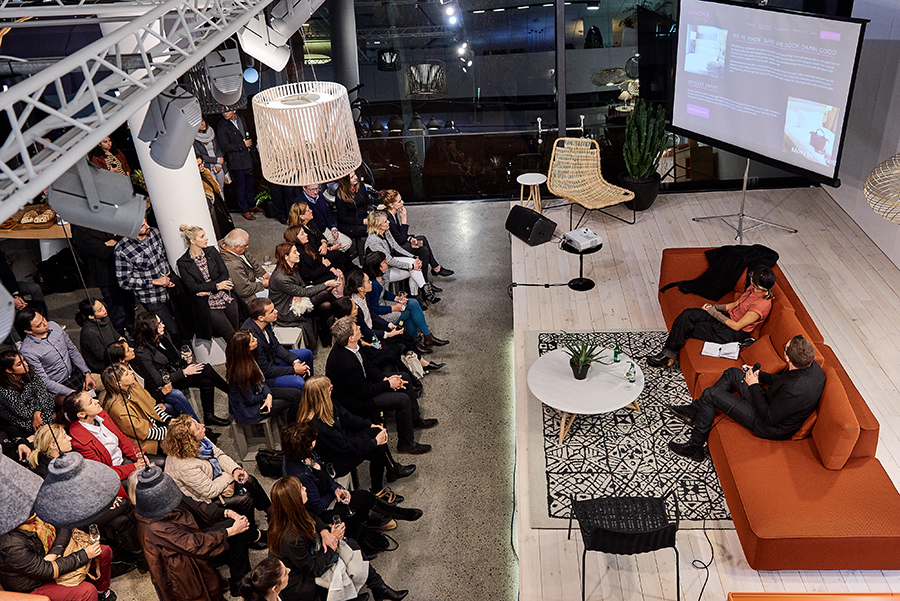 Gone are the days hotels are merely a place to stay, removed from the culture and energy of the community outside. Today they are designed as vibrant and connected destinations in themselves; places to experience for their own well-deserved merits.
On July 14 KE-ZU hosted “Connecting the Dots Vol. 1” presented by Nicky Lobo, Editor of Habitus, and with Matthew Sheargold, Senior Associate at HASSELL, discussing current and future trends in hospitality design. Matthew explored how hoteliers, architects and designers, faced with competition by Airbnb and challenged to millennial demands for memorable, local and efficient experiences, are breaking the conventions of traditional hospitality design and thinking outside the hotel-room box.
Gone are the days hotels are merely a place to stay, removed from the culture and energy of the community outside. Today they are designed as vibrant and connected destinations in themselves; places to experience for their own well-deserved merits.
On July 14 KE-ZU hosted “Connecting the Dots Vol. 1” presented by Nicky Lobo, Editor of Habitus, and with Matthew Sheargold, Senior Associate at HASSELL, discussing current and future trends in hospitality design. Matthew explored how hoteliers, architects and designers, faced with competition by Airbnb and challenged to millennial demands for memorable, local and efficient experiences, are breaking the conventions of traditional hospitality design and thinking outside the hotel-room box.
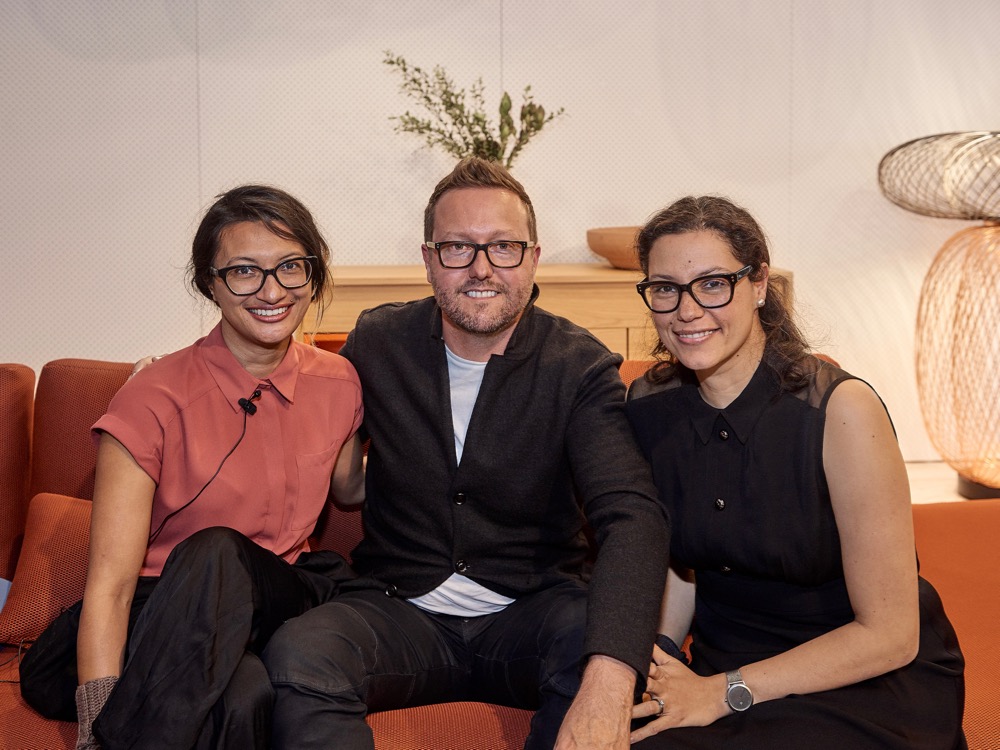
Trends in the travel industry are constantly shifting with recent developments being very much driven by the millennial generation. They’re intrepid and tech-savvy, and while they’re financial capabilities and demographics may differ, their search for shared connections, local knowledge, memorable experiences, and free WIFI holds strong. These four elements, as Matthew identifies, are “disrupting” the hotel industry as we know it, forcing large and small hospitality brands to react and adapt to keep up. This development is leading to a new realm of hotel design with lively, social and quite simply stunning spaces serving as destinations in their own right.
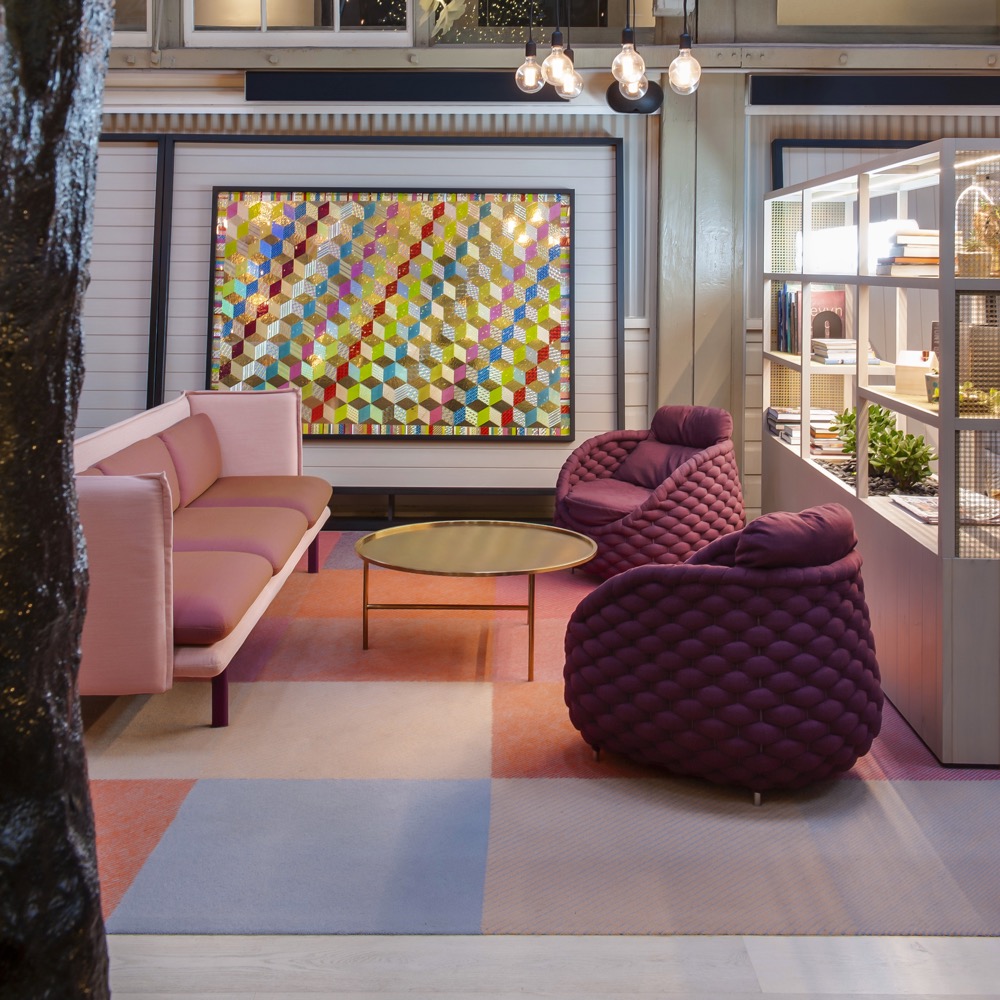
Small is the new name of the game, which makes it easier for new entrants while encouraging larger brands to create more intimate and affordable offerings.
Canopy by Hilton is the “energizing new hotel in the neighbourhood” – or so its website says, because all the hotels are still in development. “This tells us they’re reacting, but it takes a while to react,” Matthew explains. “Some are ahead of the game and others are still catching up.” And what are they reacting to? Airbnb: the online marketplace offering access to unique accommodation around the world. “The business exploded and very quickly. It didn’t have to build real estate, whereas hotels have to build and accommodate in a very different way.”
Other big brands playing the field, and with millennials firmly in their sights, are
Moxy Hotels by Marriott and
Mama Shelter from Accor.
Ace Hotel, however, has already tapped into the market, selling itself on a mindset rather than a bank balance. “They’re attracting a wonderful mix of people from different demographics or financial brackets who are in the same head space,” Matthew says. “You can have a one-star experience or a five-star experience; a room with bunk beds and no bathroom or a suite. It’s a really interesting model.”
In Europe,
Generator Hostels is saying au revoir to cramped dormitories and adios to no-frills facilities and offering “design-led hostels” (dubbed “Poshtels”) and “awe-inspiring social experiences.” With communal spaces that appear similar to breakout spaces, Matthew comments on the continual crossover of work, home and travel design sectors. “The line is now blurred with the need for communal spaces that encourage people to meet in different ways.”
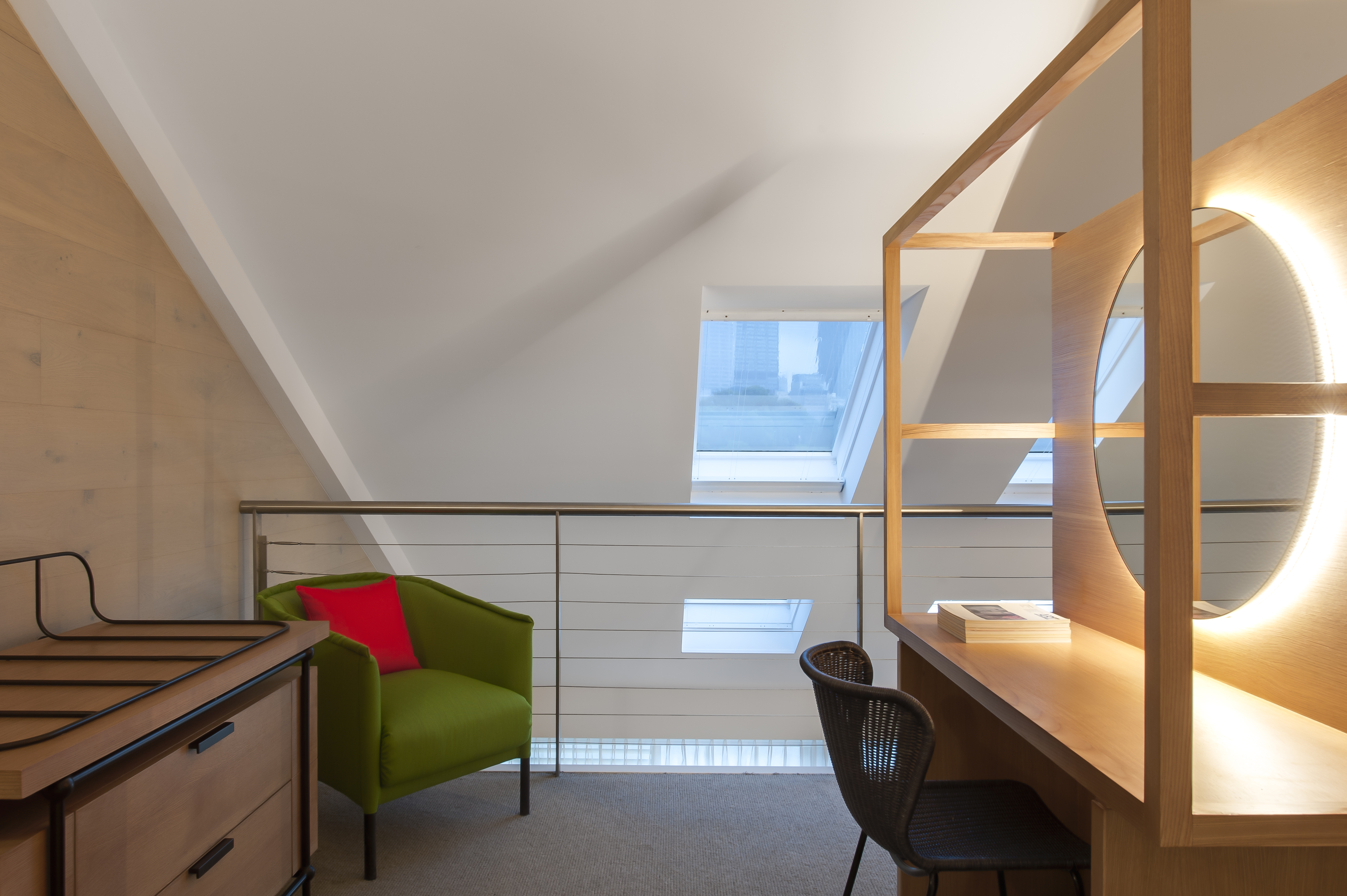
This is particularly evident in one of HASSELL’s latest projects,
Ovolo Woolloomooloo, led by Matthew and completed in 2015. The cavernous wind tunnel on the century-old Finger Wharf has been transformed into a vibrant and cosmopolitan destination that encourages people to stick around. “The challenge was how to activate the space and get people to stay here all day, not just for breakfast.” Identifying the various groups of visitors and their reasons for visiting, Matthew and the HASSELL design team created a heart and soul for the hotel with a series of functional areas for lounging, dining, meeting, working, and even games. “Hotels are becoming social incubators,” Matthew says. “Every client is asking for environments that connect; where people can meet, connect and share knowledge.”
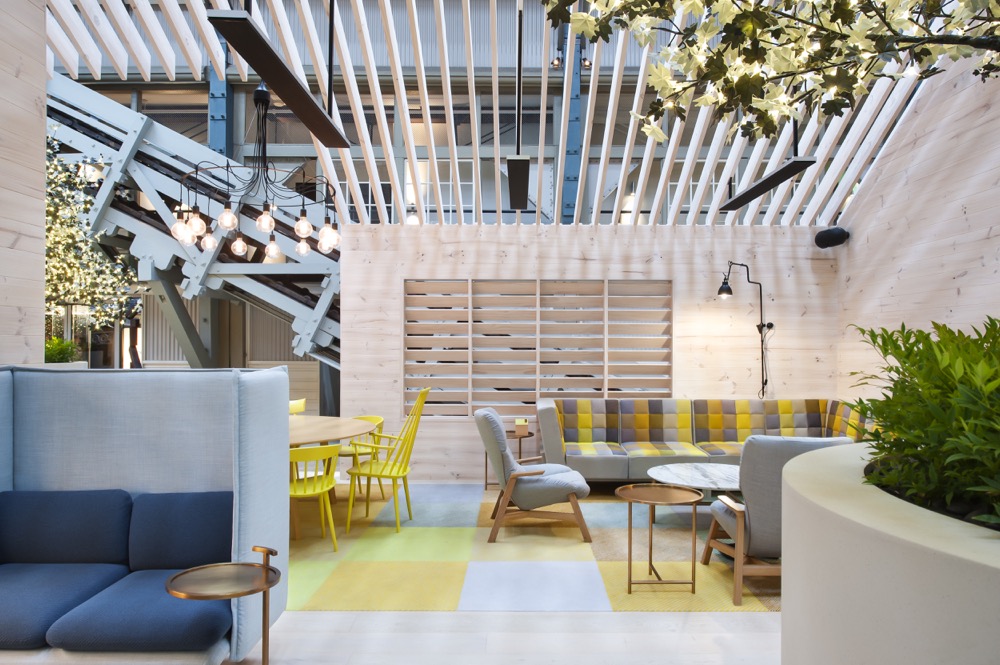
And it’s not just connection with people that visitors are seeking, but also with the local area. “This will be huge in the next couple of years,” Matthew foresees. “Smaller hotels with less facilities but stronger connections to the neighbourhood and local businesses: restaurants, bars and gyms.” In Los Angeles,
The Line in Koreatown is as honest and raw as the neighbourhood. “It’s a part of LA that visitors wouldn’t traditionally seek out, but it reflects the hunger for people wanting to experience a city and place where locals actually hang out and live.” Similarly in Chippendale, Sydney, The Old Clare Hotel sits on the fringe of the city, as does the Town Hall Hotel in Bethnal Green, London. “It allows them to spend more money on other aspects of the design,” says Nicky, and indeed both hotels have diverse and well-designed spaces that encourage people to spend time there.
When it comes to luxury, the concept is being redefined. “Luxury is no longer just about the quality of the finishes; it’s about the importance of the experience and the memories that are created and collected,” says Matthew. This notion of ‘feeling,’ rather than ‘having,’ can be distilled by location, as in the remote and serene
Pumphouse Point on Lake St. Clair in Tasmania; or by design, as in the dramatic and intense spaces of the
TUVE in Hong Kong. Matthew describes Barcelona’s Cotton House Hotel as a “sumptuous visual feast” and Ian Schrager’s The London EDITION as “old-school beautiful luxury.”
Hotel Hotel in Canberra by Fendler Katsalidis Architects and Suppose Design Office also rates a worthy mention. “It doesn’t feel like any other hotel,” Matthew describes. “I’m really happy to be able to put in more and more Australian work. It’s inspiring to see such incredible work happening in Australia at the moment.”
The focus on the millennial market also brings a focus on the increasing need for technological advancements in the hotel industry. Beyond free WIFI is the demand for streamlined and automated services from room access and room service to check-in and check-out. Hotels are doing away with traditional reception desks: The Opposite House in Beijing by renowned Japanese architect Kengo Kuma has a personal and sociable lounge area, and Henn-na Hotel in Japan has robots and face-scanning technology. Aloft Hotels offer room service via emojis and Yotels have mobile key access.
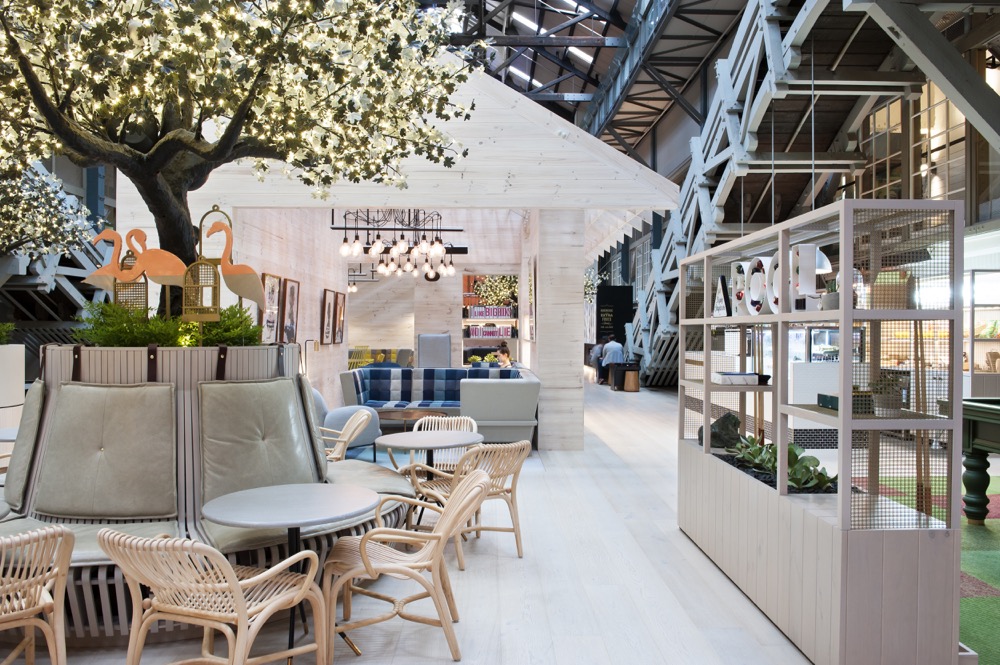
Of course trends in travel will continue to evolve challenging hoteliers to lead the charge or to adapt and react. These trends will also continue to stoke the creativity of architects and designers encouraging them to consider not just the possibilities of what a hotel can be, but the potential of what a hotel can do.
We would like to thank Matthew and Nicky for bringing this event to life and sharing these valuable insights with us.
Please visit the event gallery to see pictures from the evening here.
You can see more of Matthew and HASSELL's work at the Ovolo Woolloomooloo here.
 Gone are the days hotels are merely a place to stay, removed from the culture and energy of the community outside. Today they are designed as vibrant and connected destinations in themselves; places to experience for their own well-deserved merits.
On July 14 KE-ZU hosted “Connecting the Dots Vol. 1” presented by Nicky Lobo, Editor of Habitus, and with Matthew Sheargold, Senior Associate at HASSELL, discussing current and future trends in hospitality design. Matthew explored how hoteliers, architects and designers, faced with competition by Airbnb and challenged to millennial demands for memorable, local and efficient experiences, are breaking the conventions of traditional hospitality design and thinking outside the hotel-room box.
Gone are the days hotels are merely a place to stay, removed from the culture and energy of the community outside. Today they are designed as vibrant and connected destinations in themselves; places to experience for their own well-deserved merits.
On July 14 KE-ZU hosted “Connecting the Dots Vol. 1” presented by Nicky Lobo, Editor of Habitus, and with Matthew Sheargold, Senior Associate at HASSELL, discussing current and future trends in hospitality design. Matthew explored how hoteliers, architects and designers, faced with competition by Airbnb and challenged to millennial demands for memorable, local and efficient experiences, are breaking the conventions of traditional hospitality design and thinking outside the hotel-room box.
 Trends in the travel industry are constantly shifting with recent developments being very much driven by the millennial generation. They’re intrepid and tech-savvy, and while they’re financial capabilities and demographics may differ, their search for shared connections, local knowledge, memorable experiences, and free WIFI holds strong. These four elements, as Matthew identifies, are “disrupting” the hotel industry as we know it, forcing large and small hospitality brands to react and adapt to keep up. This development is leading to a new realm of hotel design with lively, social and quite simply stunning spaces serving as destinations in their own right.
Trends in the travel industry are constantly shifting with recent developments being very much driven by the millennial generation. They’re intrepid and tech-savvy, and while they’re financial capabilities and demographics may differ, their search for shared connections, local knowledge, memorable experiences, and free WIFI holds strong. These four elements, as Matthew identifies, are “disrupting” the hotel industry as we know it, forcing large and small hospitality brands to react and adapt to keep up. This development is leading to a new realm of hotel design with lively, social and quite simply stunning spaces serving as destinations in their own right.
 Small is the new name of the game, which makes it easier for new entrants while encouraging larger brands to create more intimate and affordable offerings. Canopy by Hilton is the “energizing new hotel in the neighbourhood” – or so its website says, because all the hotels are still in development. “This tells us they’re reacting, but it takes a while to react,” Matthew explains. “Some are ahead of the game and others are still catching up.” And what are they reacting to? Airbnb: the online marketplace offering access to unique accommodation around the world. “The business exploded and very quickly. It didn’t have to build real estate, whereas hotels have to build and accommodate in a very different way.”
Other big brands playing the field, and with millennials firmly in their sights, are Moxy Hotels by Marriott and Mama Shelter from Accor. Ace Hotel, however, has already tapped into the market, selling itself on a mindset rather than a bank balance. “They’re attracting a wonderful mix of people from different demographics or financial brackets who are in the same head space,” Matthew says. “You can have a one-star experience or a five-star experience; a room with bunk beds and no bathroom or a suite. It’s a really interesting model.”
In Europe, Generator Hostels is saying au revoir to cramped dormitories and adios to no-frills facilities and offering “design-led hostels” (dubbed “Poshtels”) and “awe-inspiring social experiences.” With communal spaces that appear similar to breakout spaces, Matthew comments on the continual crossover of work, home and travel design sectors. “The line is now blurred with the need for communal spaces that encourage people to meet in different ways.”
Small is the new name of the game, which makes it easier for new entrants while encouraging larger brands to create more intimate and affordable offerings. Canopy by Hilton is the “energizing new hotel in the neighbourhood” – or so its website says, because all the hotels are still in development. “This tells us they’re reacting, but it takes a while to react,” Matthew explains. “Some are ahead of the game and others are still catching up.” And what are they reacting to? Airbnb: the online marketplace offering access to unique accommodation around the world. “The business exploded and very quickly. It didn’t have to build real estate, whereas hotels have to build and accommodate in a very different way.”
Other big brands playing the field, and with millennials firmly in their sights, are Moxy Hotels by Marriott and Mama Shelter from Accor. Ace Hotel, however, has already tapped into the market, selling itself on a mindset rather than a bank balance. “They’re attracting a wonderful mix of people from different demographics or financial brackets who are in the same head space,” Matthew says. “You can have a one-star experience or a five-star experience; a room with bunk beds and no bathroom or a suite. It’s a really interesting model.”
In Europe, Generator Hostels is saying au revoir to cramped dormitories and adios to no-frills facilities and offering “design-led hostels” (dubbed “Poshtels”) and “awe-inspiring social experiences.” With communal spaces that appear similar to breakout spaces, Matthew comments on the continual crossover of work, home and travel design sectors. “The line is now blurred with the need for communal spaces that encourage people to meet in different ways.”
 This is particularly evident in one of HASSELL’s latest projects, Ovolo Woolloomooloo, led by Matthew and completed in 2015. The cavernous wind tunnel on the century-old Finger Wharf has been transformed into a vibrant and cosmopolitan destination that encourages people to stick around. “The challenge was how to activate the space and get people to stay here all day, not just for breakfast.” Identifying the various groups of visitors and their reasons for visiting, Matthew and the HASSELL design team created a heart and soul for the hotel with a series of functional areas for lounging, dining, meeting, working, and even games. “Hotels are becoming social incubators,” Matthew says. “Every client is asking for environments that connect; where people can meet, connect and share knowledge.”
This is particularly evident in one of HASSELL’s latest projects, Ovolo Woolloomooloo, led by Matthew and completed in 2015. The cavernous wind tunnel on the century-old Finger Wharf has been transformed into a vibrant and cosmopolitan destination that encourages people to stick around. “The challenge was how to activate the space and get people to stay here all day, not just for breakfast.” Identifying the various groups of visitors and their reasons for visiting, Matthew and the HASSELL design team created a heart and soul for the hotel with a series of functional areas for lounging, dining, meeting, working, and even games. “Hotels are becoming social incubators,” Matthew says. “Every client is asking for environments that connect; where people can meet, connect and share knowledge.”
 And it’s not just connection with people that visitors are seeking, but also with the local area. “This will be huge in the next couple of years,” Matthew foresees. “Smaller hotels with less facilities but stronger connections to the neighbourhood and local businesses: restaurants, bars and gyms.” In Los Angeles, The Line in Koreatown is as honest and raw as the neighbourhood. “It’s a part of LA that visitors wouldn’t traditionally seek out, but it reflects the hunger for people wanting to experience a city and place where locals actually hang out and live.” Similarly in Chippendale, Sydney, The Old Clare Hotel sits on the fringe of the city, as does the Town Hall Hotel in Bethnal Green, London. “It allows them to spend more money on other aspects of the design,” says Nicky, and indeed both hotels have diverse and well-designed spaces that encourage people to spend time there.
When it comes to luxury, the concept is being redefined. “Luxury is no longer just about the quality of the finishes; it’s about the importance of the experience and the memories that are created and collected,” says Matthew. This notion of ‘feeling,’ rather than ‘having,’ can be distilled by location, as in the remote and serene Pumphouse Point on Lake St. Clair in Tasmania; or by design, as in the dramatic and intense spaces of the TUVE in Hong Kong. Matthew describes Barcelona’s Cotton House Hotel as a “sumptuous visual feast” and Ian Schrager’s The London EDITION as “old-school beautiful luxury.” Hotel Hotel in Canberra by Fendler Katsalidis Architects and Suppose Design Office also rates a worthy mention. “It doesn’t feel like any other hotel,” Matthew describes. “I’m really happy to be able to put in more and more Australian work. It’s inspiring to see such incredible work happening in Australia at the moment.”
The focus on the millennial market also brings a focus on the increasing need for technological advancements in the hotel industry. Beyond free WIFI is the demand for streamlined and automated services from room access and room service to check-in and check-out. Hotels are doing away with traditional reception desks: The Opposite House in Beijing by renowned Japanese architect Kengo Kuma has a personal and sociable lounge area, and Henn-na Hotel in Japan has robots and face-scanning technology. Aloft Hotels offer room service via emojis and Yotels have mobile key access.
And it’s not just connection with people that visitors are seeking, but also with the local area. “This will be huge in the next couple of years,” Matthew foresees. “Smaller hotels with less facilities but stronger connections to the neighbourhood and local businesses: restaurants, bars and gyms.” In Los Angeles, The Line in Koreatown is as honest and raw as the neighbourhood. “It’s a part of LA that visitors wouldn’t traditionally seek out, but it reflects the hunger for people wanting to experience a city and place where locals actually hang out and live.” Similarly in Chippendale, Sydney, The Old Clare Hotel sits on the fringe of the city, as does the Town Hall Hotel in Bethnal Green, London. “It allows them to spend more money on other aspects of the design,” says Nicky, and indeed both hotels have diverse and well-designed spaces that encourage people to spend time there.
When it comes to luxury, the concept is being redefined. “Luxury is no longer just about the quality of the finishes; it’s about the importance of the experience and the memories that are created and collected,” says Matthew. This notion of ‘feeling,’ rather than ‘having,’ can be distilled by location, as in the remote and serene Pumphouse Point on Lake St. Clair in Tasmania; or by design, as in the dramatic and intense spaces of the TUVE in Hong Kong. Matthew describes Barcelona’s Cotton House Hotel as a “sumptuous visual feast” and Ian Schrager’s The London EDITION as “old-school beautiful luxury.” Hotel Hotel in Canberra by Fendler Katsalidis Architects and Suppose Design Office also rates a worthy mention. “It doesn’t feel like any other hotel,” Matthew describes. “I’m really happy to be able to put in more and more Australian work. It’s inspiring to see such incredible work happening in Australia at the moment.”
The focus on the millennial market also brings a focus on the increasing need for technological advancements in the hotel industry. Beyond free WIFI is the demand for streamlined and automated services from room access and room service to check-in and check-out. Hotels are doing away with traditional reception desks: The Opposite House in Beijing by renowned Japanese architect Kengo Kuma has a personal and sociable lounge area, and Henn-na Hotel in Japan has robots and face-scanning technology. Aloft Hotels offer room service via emojis and Yotels have mobile key access.
 Of course trends in travel will continue to evolve challenging hoteliers to lead the charge or to adapt and react. These trends will also continue to stoke the creativity of architects and designers encouraging them to consider not just the possibilities of what a hotel can be, but the potential of what a hotel can do.
We would like to thank Matthew and Nicky for bringing this event to life and sharing these valuable insights with us.
Please visit the event gallery to see pictures from the evening here.
You can see more of Matthew and HASSELL's work at the Ovolo Woolloomooloo here.
Of course trends in travel will continue to evolve challenging hoteliers to lead the charge or to adapt and react. These trends will also continue to stoke the creativity of architects and designers encouraging them to consider not just the possibilities of what a hotel can be, but the potential of what a hotel can do.
We would like to thank Matthew and Nicky for bringing this event to life and sharing these valuable insights with us.
Please visit the event gallery to see pictures from the evening here.
You can see more of Matthew and HASSELL's work at the Ovolo Woolloomooloo here.

